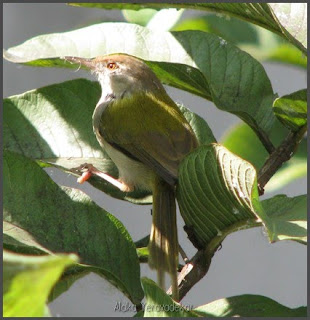Pune has a lot to offer to birdwatchers and nature enthusiasts. All the more reason to conserve the wilderness, indigenous trees and plants still standing. This blogspot was begun with the idea of recording only the natural environment of Pune, but now the issues that threaten this environment also find a place here
Thursday
Birding at Pune University
There was a pleasant nip in the air as I entered the univ gates one late January morning, with hopes of seeing the last few winter migrants.
Accompanied by a friend we strolled along the left road fork. We stopped at the physics dept. building. There was a lot of small bird activity visible. A redstart female sat on a fence, her tail shivering in the typical style of these birds. Several red-throated flycatchers hopped along the branches of an old tree. I did manage to catch a male, its red throat prominently visible.
A metallic ‘ttrr ttrr’ made me whirl around. There was this cheeky fellow in blue with white belly, and orange spreading down from the throat. It was a Tickell’s Blue Flycatcher. This one was coolly perched on the handlebars of a bicycle!
We continued our walk and soon reached what looks like a quarry, with a derelict stone building at its centre. In the rains, water collects in this place, which makes an excellent habitat for birds such as the white throated kingfisher, white breasted water hen, pond herons and such.
Suddenly a flock of birds landed on trees nearby, with cries of ‘tui tui’. These were the plum headed parakeets. The male has a beautiful plum red head; the female is somewhat duller.
Up on a tree two coppersmith barbets had landed. One picked something into its beak from a clump of leaves, and fed it to the other barbet, which appeared to be a juvenile.
From this point we kept walking along the left fork that leads to the football ground. Before the ground, there is a scrub patch on the left, with acacia, glyricidia trees, and dry grass. As we moved into this, a flock of small birds camouflaged till now, hurriedly flew up and to the trees. Sparrows!
We were soon rewarded with sightings of a Long Tailed Shrike, Little Brown Dove, Greater Coucal, Common Babblers, Black Drongos, and Hoopoes (one sat on a tree and preened itself!). Purple Sunbirds- male, female and eclipsed male – were visible, buzzing around a dry tree with seed pods.
Our few spare hours were over, and did not allow us to explore other areas, especially the clump of banyan trees that usually host Grey Hornbills.
Link to some more photos: click here
Labels:
migrant,
pune,
university,
winter
Subscribe to:
Post Comments (Atom)


No comments:
Post a Comment